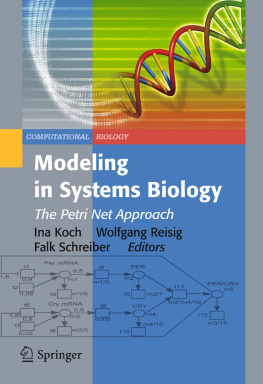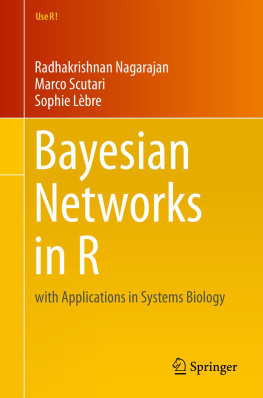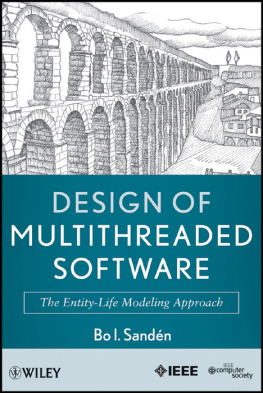1.1 Systems Biology
In biology, the science of living organisms, we want to understand life in its entirety. We examine all living things at different levels of abstraction and description. We are interested in distribution and classification, origin and evolution, structure and function of biological species. In order to really understand life we have to consider not only the single components, which are complicated enough, but also their interactions, again at different levels of abstraction. We have to move from the reductionist paradigm , where single components and single interactions have been identified and characterized, to the holistic paradigm . Following the holistic paradigm, components are not only pooled together, but rather integrated in such a way that all these components form a biological system, which reflects the dynamic behavior of life.
We can find different definitions of systems biology which express different aspects of the field. Instead of inventing a new one, representative for many others, we give four of them:
A field that seeks to study the relationships and interactions between various parts of a biological system ( metabolic pathways, organelles, cells, and organisms ) and to integrate this information to understand how biological systems function [].
A hypothesis-driven field of research that creates predictive mathematical models of complex biological processes or organ systems [].
A discipline that aims at deciphering relationships between different parts of a biological system with the goal of understanding and predicting the behavior of the system as a whole [].
Systems biology is a relatively new biological study field that focuses on the systematic study of complex interactions in biological systems thus using a new perspective ( integration instead of reduction ) to study them [].
The change to a holistic paradigm is only possible if data about system components and their interactions is available. The development of high-throughput data collecting techniques, for example, microarrays, protein chips, yeast two-hybrid screens etc., enables us to simultaneously interrogate cell components at any given time. Based on this data and depending on the abstraction level, we can consider various types of interaction networks, for example, proteinprotein interaction networks, metabolic networks, signaling networks, transcriptional and gene regulatory networks, etc. For an introduction into biology including the description of these networks, see Chap. 2.
Kitano, one of the pioneers in systems biology, summarized in []:
To understand biology at the system level, we must examine the structure and dynamics of cellular and organismal function, rather than the characteristics of isolated parts of a cell or organism. Properties of systems, such as robustness, emerge as central issues, and understanding these properties may have an impact on the future of medicine. However, many breakthroughs in experimental devices, advanced software, and analytical methods are required before the achievements of systems biology can live up to their much-touted potential.
For further reading on systems biology, see [].
Methodologically, we can divide the field of systems biology into experimental (wet lab) and theoretical and computational (dry lab) systems biology. Our book focuses on the theoretical and computational aspects in systems biology, and within that field on the application of Petri net theory to solve biological questions in biochemical networks. Before starting with the different aspects of Petri net modeling, let us formulate some general thoughts on models and modeling.
1.2 Models and Modeling
First of all, what is a model? Which purposes should be served by a model? Mathematical logic models are based on sets of axioms, which are always valid in the considered models. These models do not represent any reality outside of the axiom system. Other models reflect the actuality, often in an abstract and simplified way allowing for understanding, because actuality is too complex to be represented in its entirety. In biology, we are also accustomed to working with model organisms. For example, we use yeast and mouse as model organisms for humans in the wet lab because data can be obtained more easily, but also to avoid ethical questions.
Thus, models should reflect known behavior, but can contain also hypotheses in order to verify them. Models can be based on different levels of abstraction. For example, to represent protein, DNA or RNA sequences we use sequences of letters over a well defined alphabet. We describe chemical structures, e.g. metabolites, as chemical structure graphs. Additionally, we depict the complex protein structures by topological diagrams that are based on graph-theoretical descriptions []. For network visualization, we apply wireframe schemes which also represent graphs. The underlying graphs of these descriptions can differ in the definitions of vertices and edges and their labels depending on of the biochemical network type. To represent dynamic properties, we apply different mathematical concepts at different levels of abstraction, so logical formalisms for Boolean modeling, discrete formalisms for Petri net modeling, differential equations for modeling continuous properties, and stochastic equations to express the stochastic properties of chemical reaction networks.
Secondly, why is modeling useful? Experimental observations cover many simple and complex processes, ranging from isolated enzymatic reactions through temporal processes in metabolic networks to patterns of gene expression and regulation. In many cases, we can not intuitively predict the behavior of even simple systems from experience. Thus, we also can not predict the behavior of complex dynamic processes with sufficient precision solely from experience. Here, we should develop a computational model, which can be easily modified. For example, we can easily extend a model or knockout components and then simulate the network behavior. Also, we can stretch or compress time scales. We can model quantities that are experimentally hidden.












